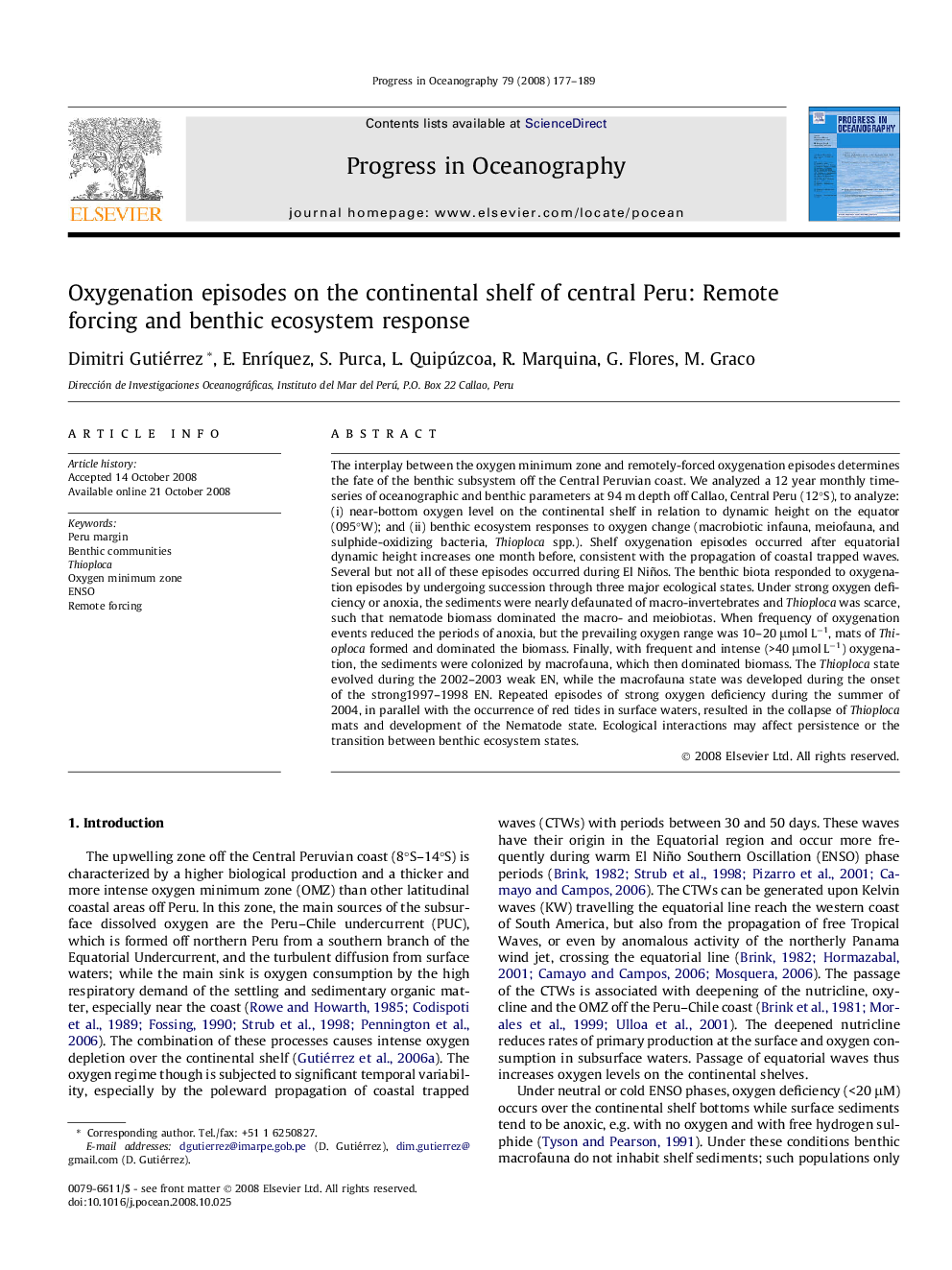| Article ID | Journal | Published Year | Pages | File Type |
|---|---|---|---|---|
| 4553630 | Progress in Oceanography | 2008 | 13 Pages |
The interplay between the oxygen minimum zone and remotely-forced oxygenation episodes determines the fate of the benthic subsystem off the Central Peruvian coast. We analyzed a 12 year monthly time-series of oceanographic and benthic parameters at 94 m depth off Callao, Central Peru (12°S), to analyze: (i) near-bottom oxygen level on the continental shelf in relation to dynamic height on the equator (095°W); and (ii) benthic ecosystem responses to oxygen change (macrobiotic infauna, meiofauna, and sulphide-oxidizing bacteria, Thioploca spp.). Shelf oxygenation episodes occurred after equatorial dynamic height increases one month before, consistent with the propagation of coastal trapped waves. Several but not all of these episodes occurred during El Niños. The benthic biota responded to oxygenation episodes by undergoing succession through three major ecological states. Under strong oxygen deficiency or anoxia, the sediments were nearly defaunated of macro-invertebrates and Thioploca was scarce, such that nematode biomass dominated the macro- and meiobiotas. When frequency of oxygenation events reduced the periods of anoxia, but the prevailing oxygen range was 10–20 μmol L−1, mats of Thioploca formed and dominated the biomass. Finally, with frequent and intense (>40 μmol L−1) oxygenation, the sediments were colonized by macrofauna, which then dominated biomass. The Thioploca state evolved during the 2002–2003 weak EN, while the macrofauna state was developed during the onset of the strong1997–1998 EN. Repeated episodes of strong oxygen deficiency during the summer of 2004, in parallel with the occurrence of red tides in surface waters, resulted in the collapse of Thioploca mats and development of the Nematode state. Ecological interactions may affect persistence or the transition between benthic ecosystem states.
